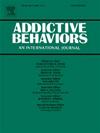美国成年人与尼古丁和大麻电子烟相关的工作场所缺勤率,2022年
IF 3.6
2区 医学
Q1 PSYCHOLOGY, CLINICAL
引用次数: 0
摘要
在美国成年人中,吸食尼古丁和大麻的人数大幅增加,但人们对其对工作效率的影响仍知之甚少。这项研究调查了尼古丁和大麻吸食模式与工作场所缺勤之间的关系。方法分析来自2022年美国全国药物使用和健康调查(N = 30,591)的非机构兼职和全职≥18岁成年人的全国代表性样本的横断面数据。使用负二项回归对社会人口特征和过去一个月的其他药物使用情况进行调整,评估尼古丁电子烟(最近度和频率)、大麻电子烟(最近度)和工作缺勤(通过自我报告的因病/受伤而缺勤的天数和过去一个月的缺勤天数来衡量)之间的关系。结果:据估计,在过去的一个月里,10.4%的全职员工吸食尼古丁,6.4%吸食大麻。与从不吸尼古丁的人相比,有吸电子烟史的人在过去一个月吸电子烟的估计缺勤率更高,因病或受伤而缺勤的发生率增加(aIRR = 1.34, 95% CI: 1.14-1.59),不上班的发生率增加(aIRR = 1.65, 95% CI: 1.24-2.21)。过去一个月吸食大麻与因病/受伤而错过工作(aIRR = 1.35, 95% CI: 1.06-1.72)和翘工(aIRR = 1.70, 95% CI: 1.32-2.18)的估计发生率增加有关,尽管这些比率与未吸食大麻的相关比率没有显着差异。与兼职工人相比,全职工人的协会通常更强。结论尼古丁和大麻电子烟都与工作场所缺勤率增加有关。研究结果支持制定和实施工作场所政策,以解决与电子烟相关的生产力损失。本文章由计算机程序翻译,如有差异,请以英文原文为准。
Nicotine and cannabis vaping-related workplace absenteeism among U.S. Adults, 2022
Introduction
Vaping of nicotine and cannabis has increased substantially among US adults, but its impact on workplace productivity remains poorly understood. This study examines the associations between nicotine and cannabis vaping patterns and workplace absenteeism.
Methods
Cross-sectional data from a US nationally representative sample of noninstitutionalized part-time and full-time employed adults aged ≥ 18 from the 2022 National Survey on Drug Use and Health (N = 30,591) were analyzed. The associations between nicotine vaping (recency and frequency), cannabis vaping (recency), and workplace absenteeism (measured by self-reported number of missed days due to illness/injury and skipped work in the past month) were evaluated using negative binomial regression adjusting for sociodemographic characteristics and other past-month drug use.
Results
An estimated 10.4 % of full-time workers vaped nicotine in the past month and 6.4 % vaped cannabis. Compared to never-vapers of nicotine, those with any history of vaping had higher estimated incidence of absences with past-month vaping associated with increased incidence of missed work due to illness/injury (aIRR = 1.34, 95 % CI: 1.14–1.59) and skipping work (aIRR = 1.65, 95 % CI: 1.24–2.21). Past-month cannabis vaping was associated with increased estimated incidence of missed work due to illness/injury (aIRR = 1.35, 95 % CI: 1.06–1.72) and skipping work (aIRR = 1.70, 95 % CI: 1.32–2.18), although these rates did not differ significantly from those associated with non-vaped cannabis use. Associations were generally stronger among full-time workers compared to part-time workers.
Conclusion
Both nicotine and cannabis vaping are associated with increased workplace absenteeism. Results support the development and implementation of workplace policies to address vaping-related productivity losses.
求助全文
通过发布文献求助,成功后即可免费获取论文全文。
去求助
来源期刊

Addictive behaviors
医学-药物滥用
CiteScore
8.40
自引率
4.50%
发文量
283
审稿时长
46 days
期刊介绍:
Addictive Behaviors is an international peer-reviewed journal publishing high quality human research on addictive behaviors and disorders since 1975. The journal accepts submissions of full-length papers and short communications on substance-related addictions such as the abuse of alcohol, drugs and nicotine, and behavioral addictions involving gambling and technology. We primarily publish behavioral and psychosocial research but our articles span the fields of psychology, sociology, psychiatry, epidemiology, social policy, medicine, pharmacology and neuroscience. While theoretical orientations are diverse, the emphasis of the journal is primarily empirical. That is, sound experimental design combined with valid, reliable assessment and evaluation procedures are a requisite for acceptance. However, innovative and empirically oriented case studies that might encourage new lines of inquiry are accepted as well. Studies that clearly contribute to current knowledge of etiology, prevention, social policy or treatment are given priority. Scholarly commentaries on topical issues, systematic reviews, and mini reviews are encouraged. We especially welcome multimedia papers that incorporate video or audio components to better display methodology or findings.
Studies can also be submitted to Addictive Behaviors? companion title, the open access journal Addictive Behaviors Reports, which has a particular interest in ''non-traditional'', innovative and empirically-oriented research such as negative/null data papers, replication studies, case reports on novel treatments, and cross-cultural research.
 求助内容:
求助内容: 应助结果提醒方式:
应助结果提醒方式:


